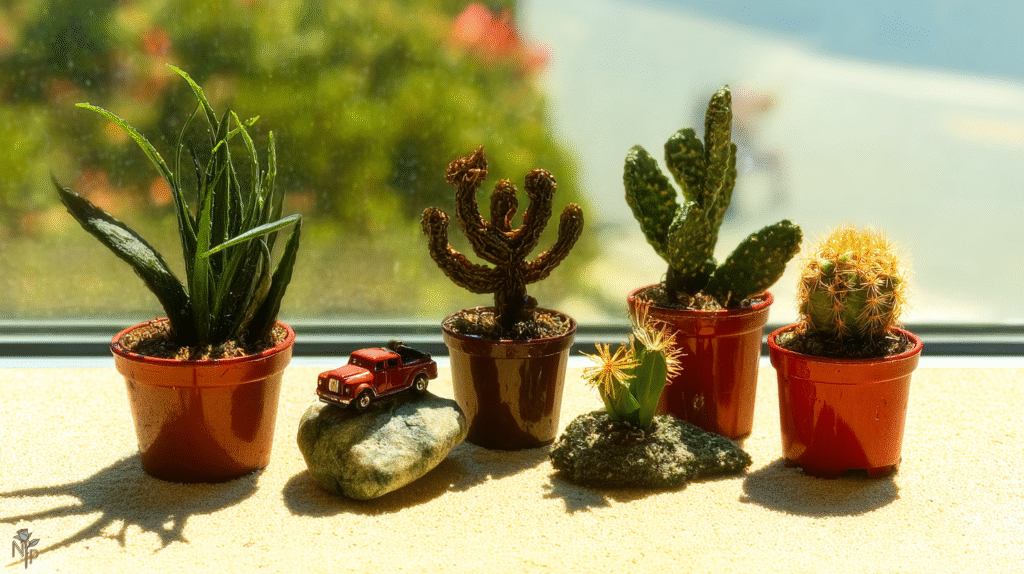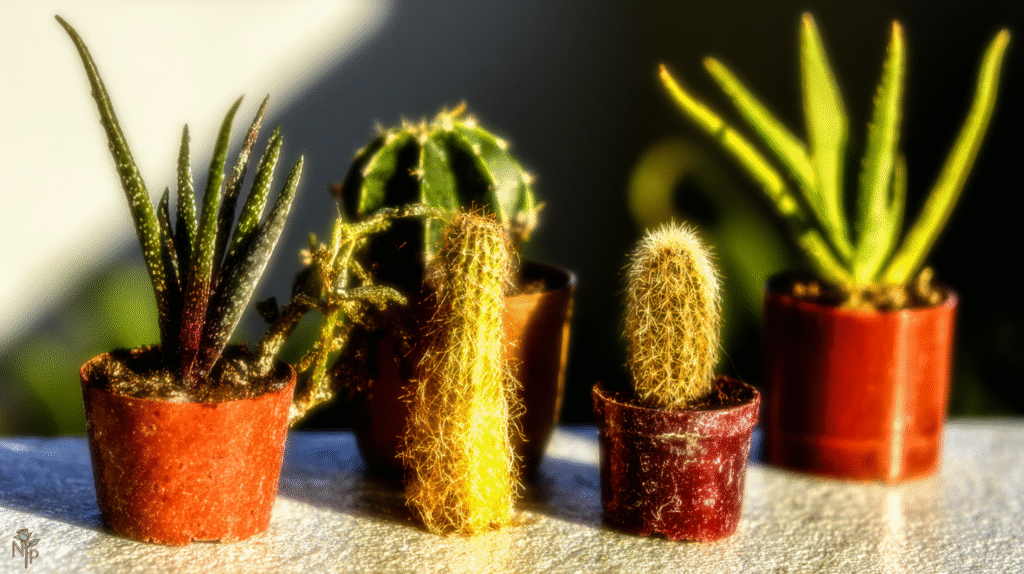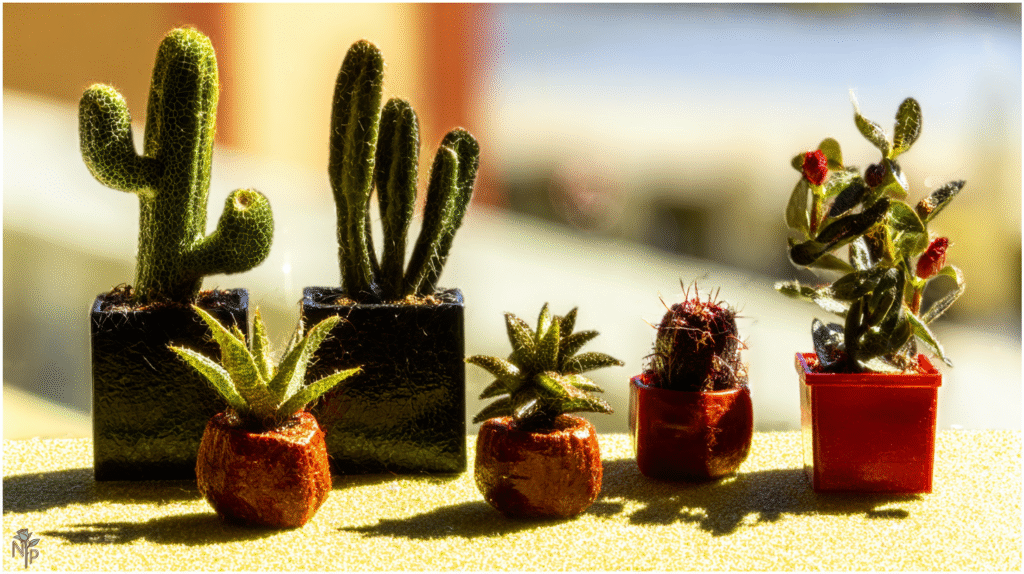My first cactus died in a week. A WEEK. The thing that survives deserts couldn’t survive seven days in my apartment.
I’d put it in this gorgeous glazed pot with no drainage holes (because I’m an idiot who prioritizes aesthetics), used regular potting soil from the garage, and watered it “just a little” every other day. By day five, it was turning yellow. By day seven, it was mush. Literally fell apart when I touched it.
That was four years and roughly fifteen dead cacti ago. Now? I’ve got 23 cacti thriving on my windowsill, including one that’s older than my nephew and another that actually bloomed last year (didn’t even know they did that). Turns out the secret to keeping cacti alive isn’t about watering less – it’s about the pot and soil. Get those wrong and you could water once a year and still kill it.
The Pot Problem Nobody Talks About
Here’s what every website says: “Use a pot with drainage holes.” No kidding. But that’s like saying “use a car with wheels” – technically correct but missing the entire point.
After killing three cacti in “proper” pots with drainage holes, I finally figured out the real issues. Size matters way more than anyone admits. Material matters even more. And those cute cactus pots shaped like animals? Death traps, every single one.
The size disaster I kept repeating:
I used to think cacti needed room to grow, so I’d put tiny cacti in big pots. You know, to “grow into.” That’s exactly how you kill them. Big pot = more soil = more moisture = dead cactus.
The pot should be just barely bigger than the cactus. I’m talking like half an inch of space around it, max. My 2-inch cactus lives in a 2.5-inch pot. Looks ridiculous? Maybe. Still alive after two years? Definitely.
Why terracotta is actually magic:
Tried plastic pots first (cheap). Then ceramic (pretty). Then those trendy concrete ones (Instagram made me do it). Lost cacti in all of them. Switched to basic, ugly terracotta and suddenly my cacti stopped dying.
Terracotta breathes. It literally wicks moisture out of the soil through the pot walls. You can see it happen – the pot changes color when it’s wet, gets lighter as it dries. It’s like a built-in moisture meter. Plus, they’re heavy enough that my cat can’t knock them over. Win-win.
The only downside? They’re ugly and they get that white crusty buildup. I don’t care anymore. Living cacti in ugly pots beats dead cacti in pretty pots.

The Drainage Hole Conspiracy
Okay, yes, you need drainage holes. But here’s what nobody mentions: one hole often isn’t enough. Especially in ceramic or plastic pots where that single hole gets clogged with soil immediately.
My game-changer discovery? Coffee filters. Put one over the drainage hole before adding soil. Keeps soil in, lets water out, costs basically nothing. Learned this from a 70-year-old cactus collector at a plant swap. Her cacti were older than me, so I listened.
For plastic pots, I drill extra holes. Not just in the bottom – around the lower sides too. Looks janky but creates airflow. My Christmas cactus (which isn’t really a cactus but whatever) went from dropping segments to growing like crazy after I attacked its pot with a drill.
Soil: The Expensive Mistake Everyone Makes
“Cactus soil” at the store is a scam. There, I said it.
Bought bag after bag of the stuff, kept killing cacti. Finally actually examined this “special” cactus soil. It was basically regular potting soil with some sand thrown in. Still held water like a sponge. No wonder my cacti were rotting.
The mix that actually works:
After much trial and death, here’s what I use:
- 1 part regular potting soil (the cheap stuff is fine)
- 1 part perlite (those white popcorn-looking things)
- 1 part coarse sand (not fine sand – that makes concrete)
But here’s the secret ingredient: chicken grit. Yeah, the stuff for chickens. It’s just crushed granite, adds weight and drainage, costs $5 for a huge bag at the feed store. Game-changer.
My current mix is probably 40% perlite/grit/sand and 60% actual soil. When I water, it runs straight through in seconds. That’s what you want.
The test that tells you everything: Grab a handful of your mixed soil and squeeze it wet. If it clumps together like a ball, it’s too dense. If it falls apart immediately, perfect. Took me way too long to figure this out.
Different Cacti, Different Needs (Who Knew?)
This one really pissed me off to learn. Not all cacti want the same thing. My barrel cactus and my Christmas cactus have completely different soil needs. Would’ve been nice if someone mentioned that before I killed my first Christmas cactus in desert soil.
Desert cacti (the spiky boys): These want the grittiest mix possible. My barrel cactus is in probably 70% perlite/sand mix. Barely any actual soil. Lives in terracotta. Gets watered maybe once a month in summer, basically never in winter. Thriving.
Jungle cacti (Christmas, Easter, whatever holiday cacti): These aren’t even from deserts! They grow in trees in rainforests. They want more organic matter, less sand. I use regular houseplant soil with extra perlite. Still good drainage but holds a bit more moisture. Figured this out after my third dead Christmas cactus.
The weird ones (moon cactus, those grafted colorful tops): These are actually two different cacti stuck together, which is insane. The bottom wants dry, the top wants slightly more moisture. I just treat them like desert cacti and hope for the best. Lost two before I stopped overthinking it.
Repotting Without the Drama
First time I repotted a cactus, I bled. A lot. Wrapped it in newspaper, still got stabbed. Used oven mitts, still got stabbed. Those little hair-like spines are the worst – invisible but somehow everywhere.
What actually works:
Tongs. Kitchen tongs. The longer the better. Grab the cactus at its base with tongs, lift, replant, done. Revolutionary.
For really spiky ones, I use carpet scraps. Wrap the cactus in old carpet, handles like a burrito. Learned this from a cactus vendor who laughed at my bandaged fingers.
When to repot:
When roots come out the drainage holes. When it falls over constantly. When it’s been three years. That’s it. Cacti actually like being root-bound, another thing nobody told me. I was repotting annually like they were regular houseplants. No wonder they kept dying from shock.

The Mistakes That Still Haunt Me
Glass containers without drainage: Saw those gorgeous terrarium setups on Pinterest. Tried it. Created a death chamber. Water has nowhere to go, builds up, rots everything. Those Pinterest cacti are either fake or photographed right before death.
Layering rocks for “drainage”: This old-school advice needs to die. Putting rocks at the bottom of a pot without holes doesn’t create drainage. It creates a swamp. Water just sits on top of the rocks. Learned this after killing a beautiful $30 cactus.
Top dressing disasters: Those pretty colored stones on top of soil? They trap moisture. My cacti started rotting from the top down. Now I use aquarium gravel if anything – at least it’s porous.
My Current Setup That Works
After all the casualties, here’s what my surviving cacti get:
Desert cacti:
- Terracotta pots, barely bigger than the plant
- 40% soil, 60% perlite/sand/grit mix
- Coffee filter over drainage holes
- No top dressing
- Bottom watering only (set pot in water for 10 minutes, let drain)
Jungle cacti:
- Plastic pots with extra drilled holes (they need slightly more moisture)
- 60% soil, 40% perlite
- Same coffee filter trick
- Occasional misting (desert cacti would riot)
The placement that matters:
All of them live on a metal shelf by a south window. The shelf has drainage trays but they’re raised on pot feet (those little ceramic things) so they never sit in water. Learned that after losing a cactus to root rot from sitting in its drainage tray.

The Truth Nobody Admits
Perfect soil and the right pot won’t save your cactus if you’re still overwatering. But here’s the thing – the right setup makes it almost impossible to overwater. Water runs through so fast there’s no time for rot to start.
My friend keeps her cacti in glass bowls with no drainage and waters with an eyedropper. They’re thriving. Makes no sense but she’s got the touch. Meanwhile, I need all the help I can get, so terracotta and gritty soil it is.
The secret is finding what works for YOUR setup. My apartment is humid, so I need extra drainage. My mom lives in the desert and uses regular potting soil. Both work.
Just please, for the love of all that’s holy, don’t put your cactus in a cute pot with no drainage holes. I don’t care if it matches your decor. Death by decorative pot is a stupid way for a cactus to go. Trust me, I’ve been responsible for too many of those funerals.






